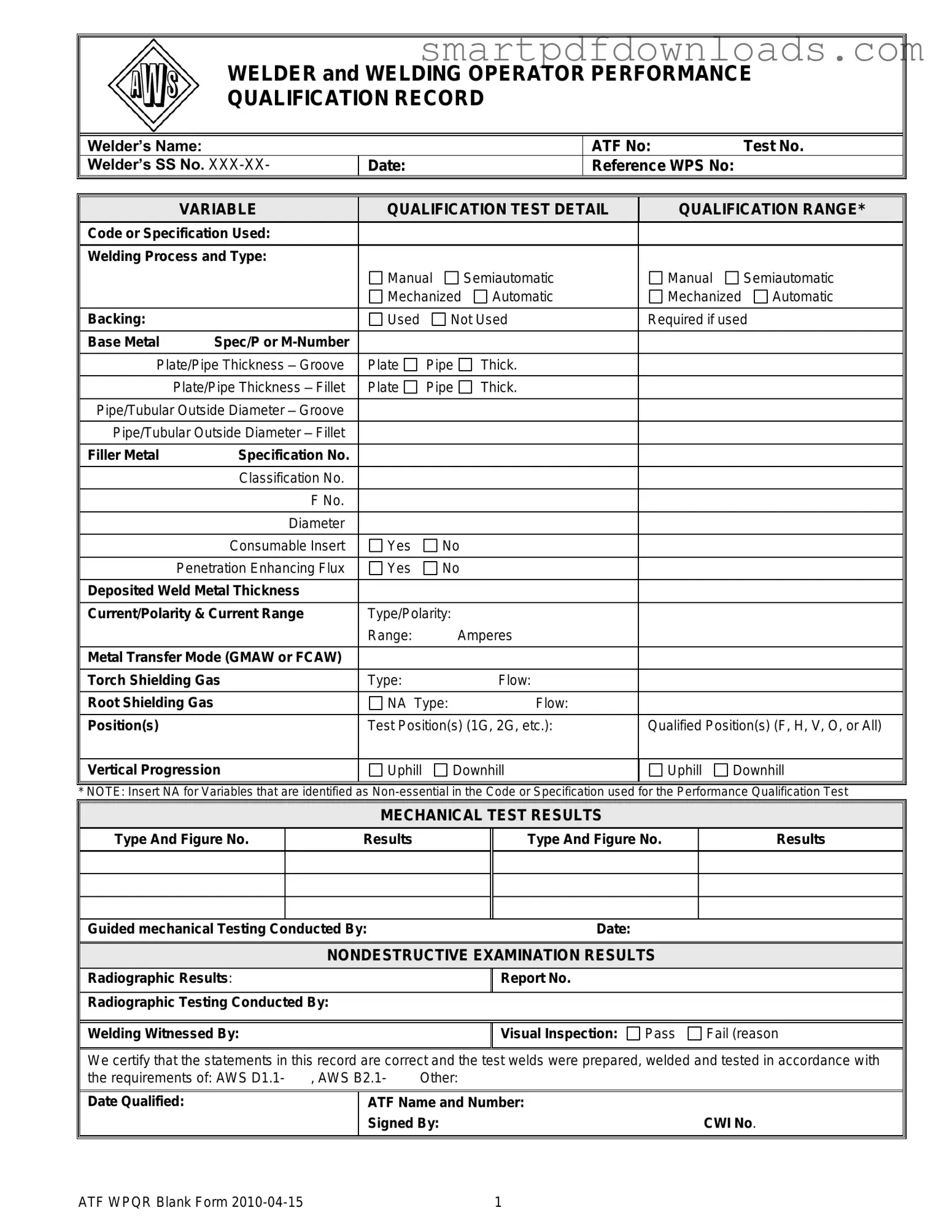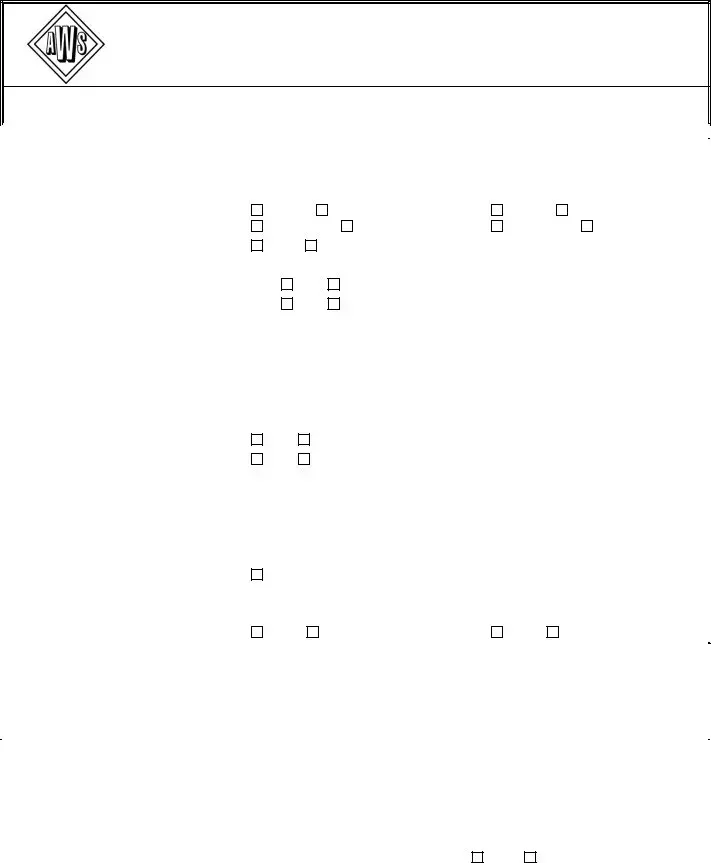Welder Performance Qualification Record Form
The Welder Performance Qualification Record form is a critical document that verifies a welder's skills and qualifications. This form captures essential details about the welder, the tests they have completed, and the results of those tests. It serves as a formal record, ensuring that welders meet the necessary standards for various welding processes.
Edit Welder Performance Qualification Record Online

